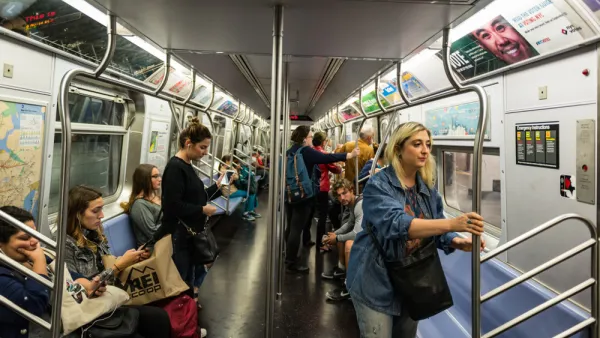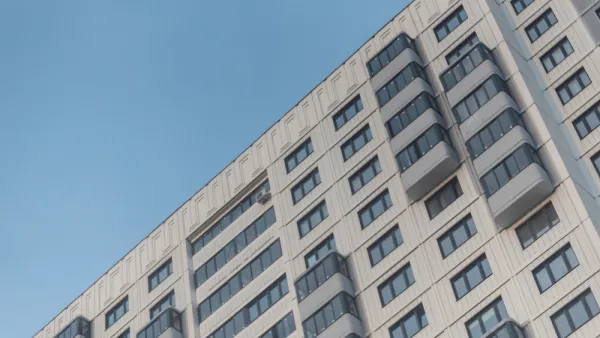Unlike its slowing economy, infrastructure projects across China continue to expand. Already home to three of the world's most-used transit systems, China plans to invest $127 billion in the coming decade to build dozens of new urban rail projects.
The Transport Politic's Yonah Freemark looks at the dramatic expansion of China's urban rapid-transit networks. Three Chinese cities now occupy the 4th, 5th, and 6th places for highest transit usage in the world (Guangzhou, Shanghai, and Beijing, respectively). In total, "[a]bout $127 billion (or 800 billion yuan) is to be directed over the next three to eight years to build 25 subways and elevated rail lines as a stimulus whose major benefit will be a increase in mobility for the rapidly urbanizing nation," says Freemark.
The Chinese government doesn't seem to be concerned with whether the new lines will ever be able to pay back their initial capital expenses or become operationally independent. Freemark opines on why this might be the case:
"It seems more likely that Chinese officials recognize that the metro investments, in addition to offering an important economic stimulus, provide positive externalities that outweigh the subsidies that will be required to maintain the systems. By setting fares low, the metro lines are able to attract higher ridership and passengers from across the income spectrum. Even in the densest, most-packed city centers, metro systems allow largely congestion-free mobility that is able to handle far more people and provide faster service than equivalent tramway or BRT programs."
"There is a reason these projects have proven so popular among China's citizens. The transportation benefits they offer certainly contribute to economic growth in the center of the cities they serve and likely limit the suburbanization of jobs."
Thanks to Andrew Gorden
FULL STORY: Profitable or Not, China Doubles Down on Investments in New Metro Systems

Analysis: Cybertruck Fatality Rate Far Exceeds That of Ford Pinto
The Tesla Cybertruck was recalled seven times last year.

National Parks Layoffs Will Cause Communities to Lose Billions
Thousands of essential park workers were laid off this week, just before the busy spring break season.

Retro-silient?: America’s First “Eco-burb,” The Woodlands Turns 50
A master-planned community north of Houston offers lessons on green infrastructure and resilient design, but falls short of its founder’s lofty affordability and walkability goals.

Test News Post 1
This is a summary

Analysis: Cybertruck Fatality Rate Far Exceeds That of Ford Pinto
The Tesla Cybertruck was recalled seven times last year.

Test News Headline 46
Test for the image on the front page.
Urban Design for Planners 1: Software Tools
This six-course series explores essential urban design concepts using open source software and equips planners with the tools they need to participate fully in the urban design process.
Planning for Universal Design
Learn the tools for implementing Universal Design in planning regulations.
EMC Planning Group, Inc.
Planetizen
Planetizen
Mpact (formerly Rail~Volution)
Great Falls Development Authority, Inc.
HUDs Office of Policy Development and Research
NYU Wagner Graduate School of Public Service



























